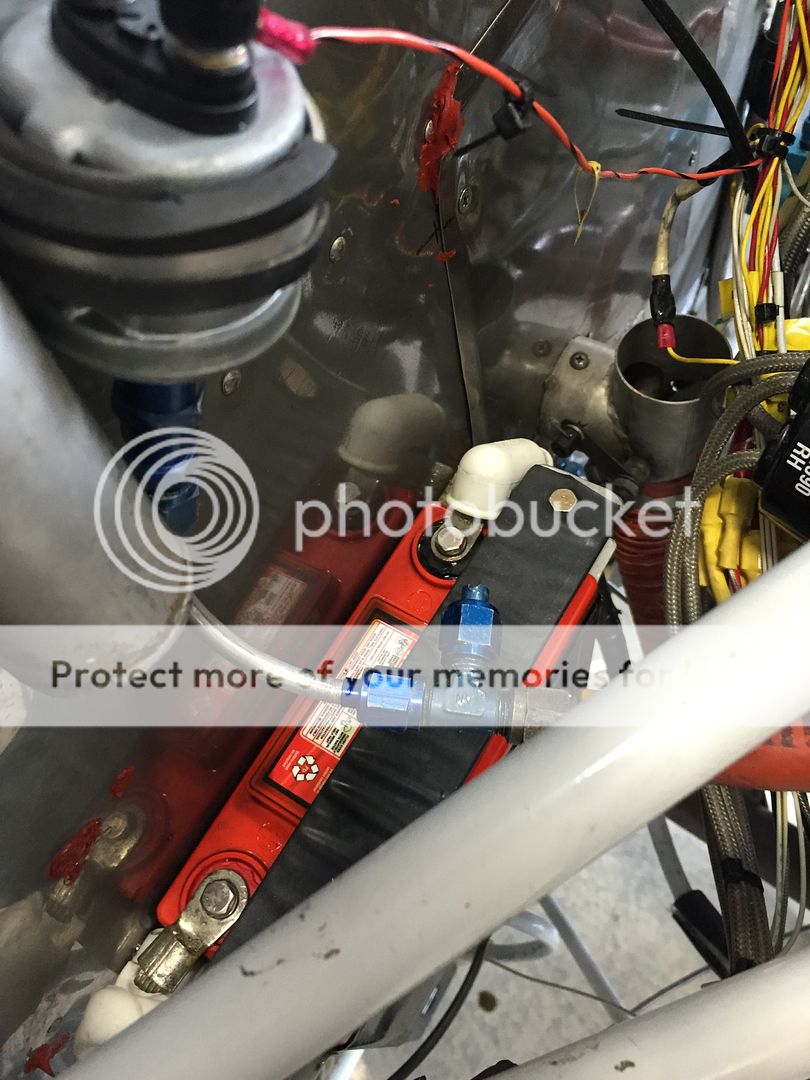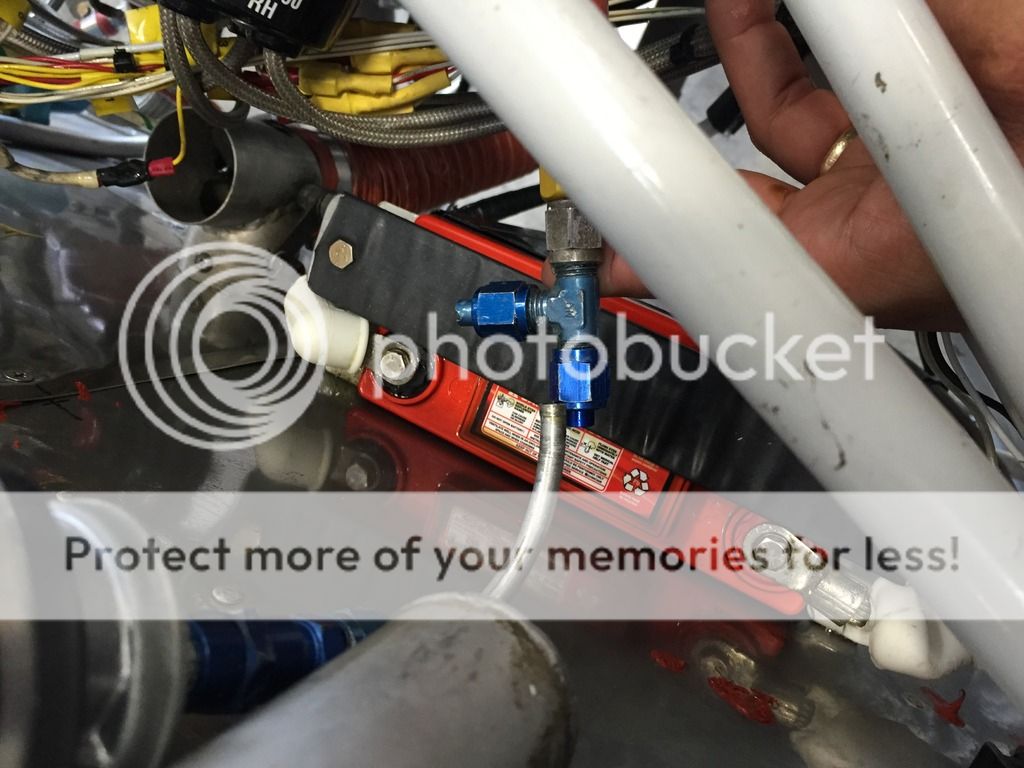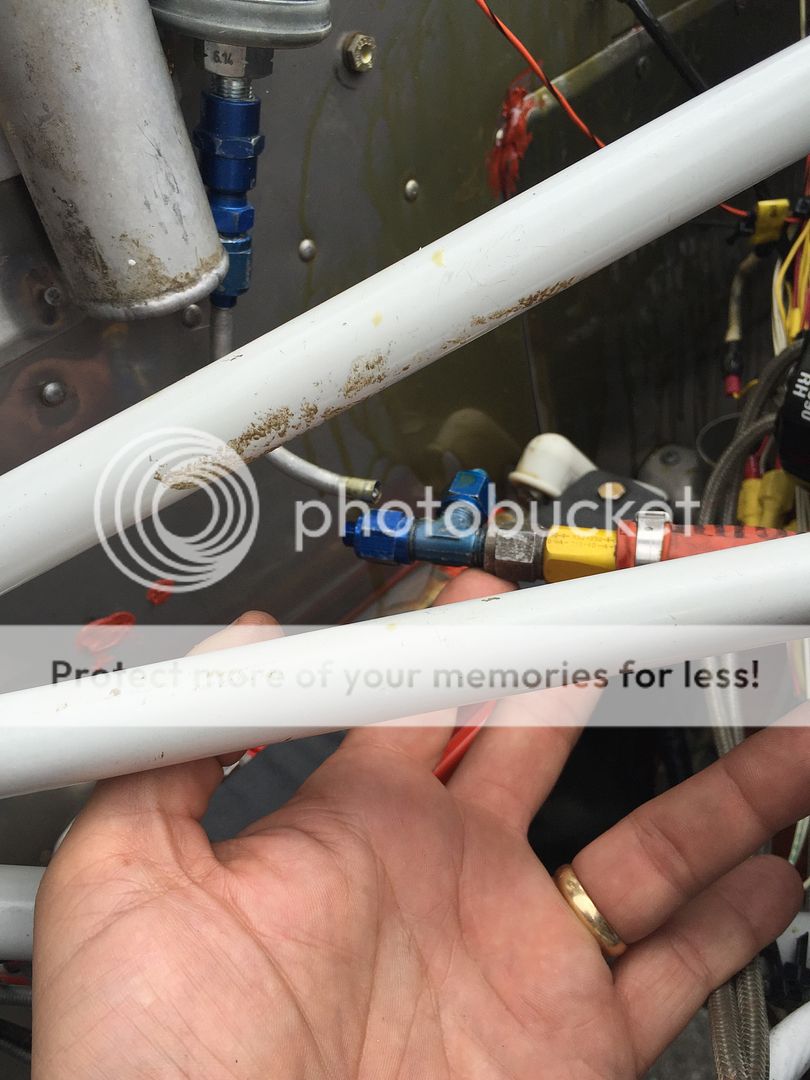Jesse
Well Known Member
I had a guy fly up to visit my shop on Saturday. I had talked to him once or twice about how difficult it has been to start his O-360. He was able to get it started on Saturday morning to come visit me (hoping I would be here, which I happened to be). Then he couldn't get it started again to get home, which very possibly saved his life, and very likely saved his plane.
The starting problem appears to be a bad Mag, or at least bad points. We popped in a Slick 4372 that we had on the shelf in place of his 4373 after talking to the Slick guru about he compatibility and how to time it for testing. We out the mag in and it started on the second blade. We ran the engine for about 15-20 seconds. After I shut down my assistants noticed that the firewall was covered with oil. Upon closer examination, this is what we found.

Which easily became this with almost no force.

In this view you can see the oil on the firewall.

Someone had used an aluminum line with flares to extend the flexible oil pressure line to the sensor. Due to the vibration, the flare had broken and the line started to leak. With the tiny amount of force it took to pull the line out of the flare nut, I am confident that a couple more seconds of engine run with 75 psi of oil pressure would have forced the line out and would have started pumping oil overboard. I don't know how long it would have taken to empty 6 quarts of oil at that pressure and that size line, but I am guessing about the time it would take to taxi and takeoff and get to maybe a couple of hundred feet. Then a seized engine or worse and into the trees. That's scary to me! The owner (who will remain unnamed, if he is on here, it's for the benefit of others) mentioned, after I sent him a picture and a short version of the above scenario, that he had seen the line when he replaced the battery after he ran the first one dead trying to start, and it looked a little weird.
Please, fellow VAFers, if something looks weird, please have someone else (preferably an aircraft mechanic) look at it to see if it is normal or an accident waiting to happen. This brigs to mind Vic's post recently of an oil suction screen packed full of crud. That got my attention. Hopefully this will get someone else's attention who may have aluminum rigid lines firewall forward in a critical engine function.
The starting problem appears to be a bad Mag, or at least bad points. We popped in a Slick 4372 that we had on the shelf in place of his 4373 after talking to the Slick guru about he compatibility and how to time it for testing. We out the mag in and it started on the second blade. We ran the engine for about 15-20 seconds. After I shut down my assistants noticed that the firewall was covered with oil. Upon closer examination, this is what we found.

Which easily became this with almost no force.

In this view you can see the oil on the firewall.

Someone had used an aluminum line with flares to extend the flexible oil pressure line to the sensor. Due to the vibration, the flare had broken and the line started to leak. With the tiny amount of force it took to pull the line out of the flare nut, I am confident that a couple more seconds of engine run with 75 psi of oil pressure would have forced the line out and would have started pumping oil overboard. I don't know how long it would have taken to empty 6 quarts of oil at that pressure and that size line, but I am guessing about the time it would take to taxi and takeoff and get to maybe a couple of hundred feet. Then a seized engine or worse and into the trees. That's scary to me! The owner (who will remain unnamed, if he is on here, it's for the benefit of others) mentioned, after I sent him a picture and a short version of the above scenario, that he had seen the line when he replaced the battery after he ran the first one dead trying to start, and it looked a little weird.
Please, fellow VAFers, if something looks weird, please have someone else (preferably an aircraft mechanic) look at it to see if it is normal or an accident waiting to happen. This brigs to mind Vic's post recently of an oil suction screen packed full of crud. That got my attention. Hopefully this will get someone else's attention who may have aluminum rigid lines firewall forward in a critical engine function.




